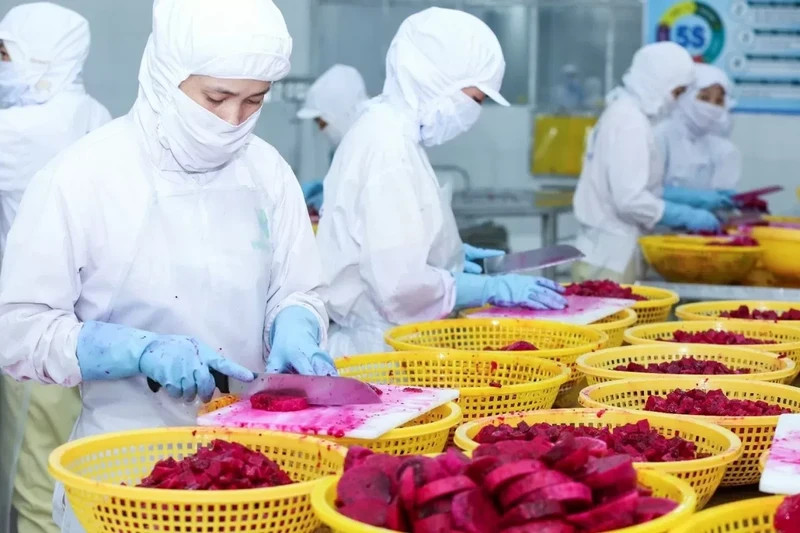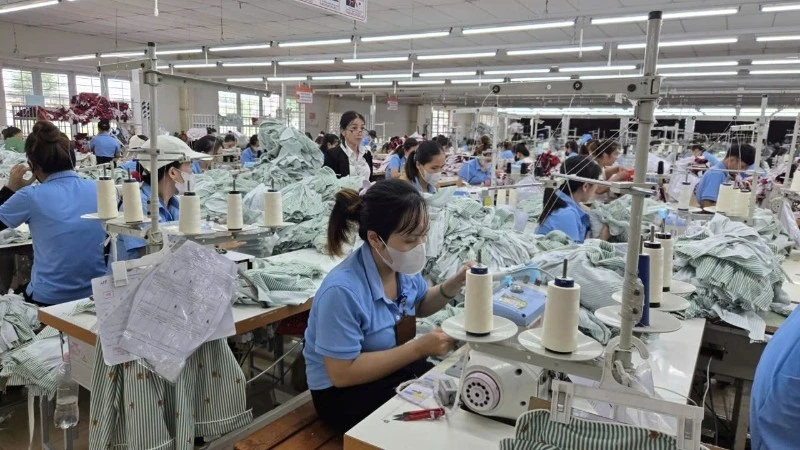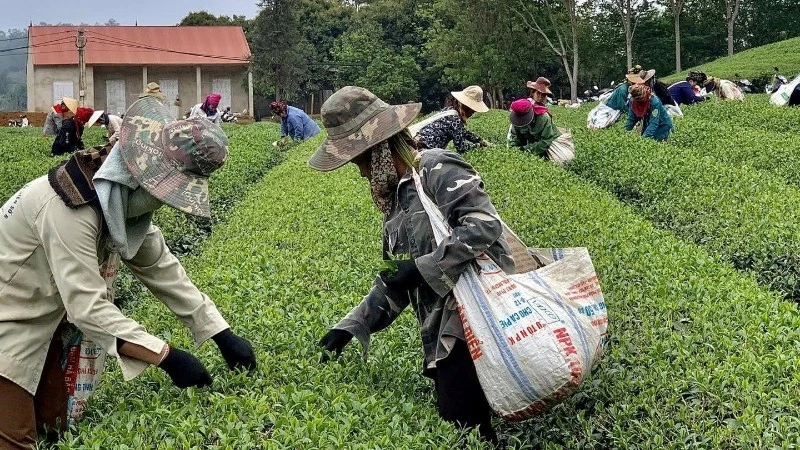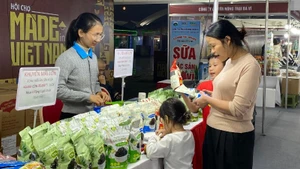Vietnamese fruits to receive good news
According to information from the Plant Protection Department (Ministry of Agriculture and Rural Development), it is expected that Vietnamese passion fruit will be officially licensed for export to the US market in 2025. This is the result of negotiations between Vietnam and the US on plant quarantine measures for this fruit.
Currently, the technical negotiations have been completed, and the two sides are currently completing the necessary legal procedures. The permission for passion fruit to enter the US market promises to create great momentum for the Vietnamese fruit and vegetable industry to continue expanding exports, especially to other demanding markets.
Previously, on September 9, the Plant Protection Department and the Australian Embassy held a ceremony to announce the export of Vietnamese passion fruit to Australia and the export of plums from Australia to Vietnam.
Australian Ambassador to Vietnam Andrew Goledzinowski assessed that this is a new milestone in the cooperation between the two countries, especially in the agricultural sector. Following mango, longan, lychee and dragon fruit, passion fruit has become the 5th fresh fruit from Vietnam to be officially exported to Australia.
Since the beginning of the year, fruits and vegetables have been the export item that recorded the highest growth rate in the country's agricultural sector. Surpassing the forecast target from the beginning of the year (that fruit and vegetable exports would reach 6 billion USD), this year's fruit and vegetable exports have set a new record as they are expected to bring in 7.2 billion USD.
By 2025, with many favourable factors, Vietnamese fruits also aim to bring in at least 8 billion USD. If we successfully conquer this milestone, our country will enter the top five countries in the world in exporting fruit.
Dang Phuc Nguyen, General Secretary of the Vietnam Fruit and Vegetable Association, shared: “In 2022, the export turnover of fruits and vegetables will only reach 3.3 billion USD. Last year, we had a record of 5.6 billion USD, this year we expect to earn from 7.1 - 7.2 billion USD.”
In the first 11 months of the year, the 10 largest markets for Vietnamese fruits and vegetables continued to grow impressively. Thailand increased by nearly 80%, while South Korea, Russia, the United States and the Middle East markets also increased from 36-40%.
Expanding the market thanks to free trade agreements and negotiations to open the door to many new types of fruits, Vietnamese fruit and vegetables are very confident with next year's goals.
Topping the list of exported fruits and vegetables is durian with an estimated value of 3.3 billion USD. Ranked second is dragon fruit at about 435 million USD, however, compared to last year, the item recorded a decline because China reduced imports by 40% in 2024. Ranked third are bananas and mangoes and some other items such as jackfruit, coconut, watermelon.
Expecting a new record for 2025
Dang Phuc Nguyen expects that this year's fruit and vegetable export turnover will reach 7.2 billion USD, and next year’s reach 8 billion USD. In particular, there are many new factors appearing, such as frozen durian and fresh coconut exported to China; negotiations for export of passion fruit to the US are currently underway; and there are new products participating.
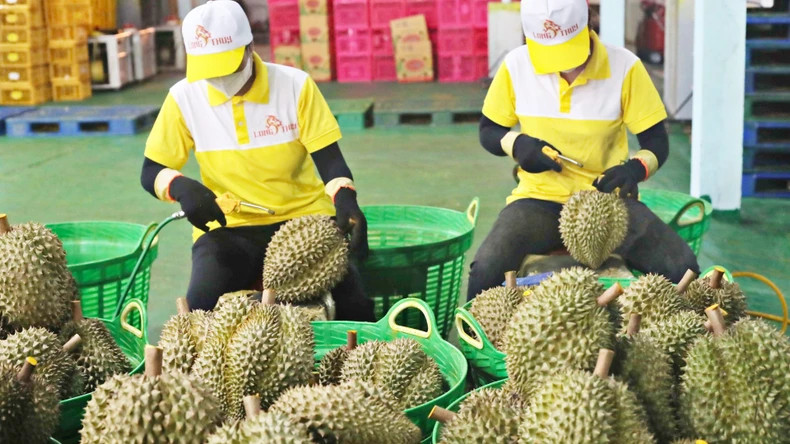 |
| Durian is a bright spot in the fruit and vegetable export picture. |
In addition, with products such as passion fruit, grapefruit, fresh coconut, frozen durian, these are new products that have just opened the market, businesses are currently in the process of preparation. Some products such as grapefruit and coconut have exported the first shipments but not much. Next year, these products will be able to take advantage of opportunities.
Nguyen Phong Phu, Technical Director of Vina T&T Group, said that enterprises processing and exporting vegetables and fruits in general and fruits in particular are facing a great opportunity to increase export turnover. The reason is that the world market demand for this source of goods is increasing, while Vietnam is doing a very good job of opening the market.
With the official signing of the Protocol on phytosanitary requirements and food safety for frozen durian exported from Vietnam to China; Protocol on phytosanitary requirements for fresh coconut exported from Vietnam to China, the door to a large market has opened for two key products of the vegetable and fruit industry.
On the other hand, the quality of Vietnamese fruits is also increasingly improved, meeting the standard requirements of each importing country, thereby increasing competitiveness when penetrating many high-quality markets.
Dao Trong Khoa, Chairman of the Vietnam Logistics Business Association, said that the export of agricultural, forestry, and fishery products in 2024 is expected to reach 62 billion USD. This is due to the contribution of Hanh Nguyen Logistics, which has pioneered irradiation technology, cold storage, as well as operating under the motto of one-stop multi-service, which has contributed to bridging agricultural products to the world.
However, fruit and vegetable exports are also facing many difficulties as countries are increasing their inspection of imported goods.
For example, the Vietnam SPS Office under the Ministry of Agriculture and Rural Development recently sent a notice to the Plant Protection Department and the Vietnam Fruit and Vegetable Association regarding the amendment of Regulation (EU) 2019/1793 on temporarily strengthening official controls and emergency measures to manage the import of certain goods from some third countries into the EU. Accordingly, the EU temporarily increased the frequency of border inspections for Vietnamese durian from 10% to 20%.
For dragon fruit, chili, and okra, the EU maintains the same frequency of inspection at the border; the inspection frequency for dragon fruit is 30%, chili and okra are 50%. These three products must be accompanied by pesticide residue analysis results when imported into the EU market.
Therefore, experts say that, along with ensuring quality standards, businesses need to promote processing, focusing on deep processing, both to increase added value and limit seasonal risks such as fresh exports. Currently, the output of processed fresh fruits and vegetables is still low while the annual harvest output is very large.
This is also one of the main reasons why Vietnam's fruit and vegetable export turnover still accounts for a low proportion in markets and market regions with high demand for processed products such as Europe, the US, and the Republic of Korea.
